Live From Jakarta: Indonesian International Auto Show Coverage
The 19th Indonesian International Motor Show (IIMS) is currently taking place at the JIExpo in the capital city, Jakarta, with almost all the world’s major automakers represented at a show which is quite simply bigger, bolder and brasher than ever before. There is a real spring in the step here as this huge, underdeveloped nation of 238 million people, the fourth-most populated in the world, stands poised to unlock the potential of its auto industry and become a major player on the world stage. Indonesia is standing at a crossroads and everyone is preparing to join the party.
In size terms, IIMS is the second-biggest motor show in South East Asia, behind only Bangkok; in terms of exhibits it is now almost an equal – although when it comes to visitor numbers (expected to peak at 300,000 this year), it is still far behind Thailand’s two annual extravaganzas. Since IIMS upped sticks and moved across town to the bigger JIExpo three years ago this event, which includes all the obligatory visitor entertainments from drifting and stunt driving to Miss Motor Show, has grown quickly; this year 38 brands and 227 suppliers and accessory companies have filled out every available space.
Indonesia, the world’s 18th biggest economy, has seen the auto industry really come out of the blocks and production has accelerated over the last half-decade by an average of 20 percent a year. Last year it broke the 700,000-unit barrier, and the one million mark is only two years away on current trends.
The government has made the auto industry one of its five main priorities and wants to reach the two million production mark in the next 5-6 years. That would see ambitious Indonesia pitching to overtake Thailand, the long time “Detroit of South East Asia.” Hatta Rajasa, the Coordinating Minister for Economic Affairs, said confidently at the opening ceremony that he foresaw Indonesia “outperforming Thailand in a few years.” He also expects Indonesia becoming “the largest automobile market in Southeast Asia”, and, significantly, he sees that achievement going hand-in-hand with becoming the region’s production hub. The global carmakers are themselves jockeying for position now – but waiting for the government to roll out incentives that will see an auto boom. Per capita income here is US$3,000 – “motorization” generally kicks off at around US$5,000 – so the duck are being lined up in a row. Through the first half of the year, 417,687 vehicles have been built. However, exports still represent a drop in the ocean, with around 90,000 units exported for the first six months of the year. This figure is split fairly evenly between CKD and CBU, and much potential here remains has to be unlocked. Johnny Darmawan, the Vice-Chairman of the Indonesian Automotive Industry Association (Gaikindo), believes that production could reach 780-830,000 units for the year.
That is the background to IIMS 2011. Last year there were 18 car brands here; this year there are 24. No-one, it seems, wants to miss out on the action, and in terms of bookings, business is already brisk. The biggest OEM here is of no surprise – Toyota has the facelifted versions of the Hilux pick up and Fortuner SUV, which made their world debuts just a couple of weeks ago in Bangkok, on show. Toyota leads the way in emerging markets around the world and it has Indonesia nailed – dependable vehicles for hardworking use, in a country where the road infrastructure is very poor. Adding spice to Toyota’s booth is its hybrid concept pickup, the “Advanced Breakthrough Aero Truck”, or A-BAT for short. It debuted four years ago in Detroit and is still being chattered about as “will they/won’t they” build it; here, however, it’s just a stand halo. Toyota is also showing off the polished FT-86 concept sports car, and another concept that looks little more than a stand filler, the 1/X, which is modeled on the Prius but through ultra-efficient weight saving it comes in at just 420 kg. Both of these have been doing the rounds of the Asian motor shows over the last year and have been seen in Bangkok and Kuala Lumpur.
Right opposite Toyota is eternal rival Honda; it has an array of bread-and-butter models and is showing off four models in Indonesia for the first time – the new, low-cost Brio which recently debuted in Thailand, as well as three innovative models: the CR-Z (sports hybrid) and two versions of the Fit: hybrid and EV. The Fit EV is significant in that it represents Honda’s approach to the electric car market. It is likely to reach production next year, although EV isn’t in the sights in Indonesia, while the Brio could well be an option for Honda to sell here. The 10-day show will give them a great chance to judge customer feedback.
Daihatsu is a key player here and in its ‘A-Concept’ it has possibly the most significant car at the show. The first serious concept to be built in Indonesia, it is a low-cost A-segment project that is being pushed by the Japanese carmaker as the car that will “motorise” the nation. Daihatsu hit the two million production mark here last October, one million of that coming in the last five years – and as demand grows, it’s just broken ground on a new plant that will raise local capacity from 330K to 430K a year. Mr Sudirman, President of the local operation says: “I’m sure these excellent staff and our new plant will bring the Indonesian automobile society onto the next stage.” A-Concept is fairly generic, but has neat touches, good ergonomics inside, and has been thoughtfully executed overall. Mr Sudirman is upbeat – with A-Concept, he’s batted a fast ball at the government, the pitch has been made. Daihatsu’s local operation meanwhile wants to become equal in status for the carmaker to Japan, and significantly Mr Sudirman has become the first Indonesian to be elected to the parent company’s board. Also notable is that the President of DMC Japan, Mr. Koichi Ina, is here to unveil A-Concept.
Daihatsu has the most lavishly appointed booth at IIMS, with a focus on family entertainments. As well as A-Concept, the Sirion, a rebadged version of the brand-new Perodua Myvi 5-door hatchback, also made its debut at the show. Perodua’s Managing Director Datuk Aminar Rashid, who was at IIMS, says that around 350 units a month will be shipped over CBU from Malaysia. The Sirion is the star of the stand and immediately the covers came off, an unmissable media advertising campaign kicked into gear. Also new to this market at the show is the latest version of the Move minivan.
Infiniti has a booth inside Honda’s floorspace and its showing off its current range, the G37 (coupe), M37 (sedan) and FX37 (SUV), as it eyes up a slice of the luxury market here. Also on show is the Essence, a hybrid concept sports car equipped with a 3.7 V6 twin turbo engine which was built two years ago to mark the 20th anniversary of the Infiniti brand – this is the first time that it has been shown off in South East Asia. Eye-catching, it’s a draw with visitors.
All three of Detroit’s big players are also here. Ford and GM are both in the market for the long-haul, but Chrysler Group, which is almost invisible throughout Asia, has chosen the Indonesian market for a fresh push as it feels the portents are good.
Ford has previewed the new Ranger at IIMS. It will be built in Thailand and arrive CBU around the end of the year. Last year Ford sold 8,200 cars here, and the Ranger accounted for the bulk of this – 5,000 units – making it the Blue Oval’s key model. Ford Indonesia President Will Angove has high hopes for the new Ranger as he sees oil, gas and mining operations continuing to boom here and he “expects to see the [pick up] segment continuing to grow.” As well as commercial use, Angove says the Ranger – just like in pick-up obsessed Thailand – is experiencing “increasing retail demand.” He reiterated the Asean ‘One Ford’ plan which is seeing eight significant new models introduced across the region over the next five years. That kicked off with the Fiesta, which Angove bullishly says is already “transforming our business in Indonesia”, while the new Ranger will be followed next year by the new Focus. All three models will be built in Thailand and arrive CBU. Angove says Ford Indonesia has “no plans to do [CKD].”
Chevrolet has debuted the facelifted Captiva crossover and also unveiled the new Colorado pick-up which has been partly developed in Thailand and will arrive early next year. The Spark has also picked up an award for ‘Best Interior Design’ from the ‘Car & Tuning Guide Awards’ at the show. Giving a halo effect to its booth, Chevrolet is showing off a bright-yellow Camaro convertible.
Having long since dropped under the radar in Asia – even missing out on the lucrative Chinese market party where it has failed to develop a beach head so far – Chrysler has popped its head above the parapet at IIMS, where all three of its brands are on show along with a swathe of new models. Chrysler is expanding its dealer network here and says it is considering Indonesia as a future production hub. Jeep takes centre stage with no less than two stands – the first is a standalone, in-between Mini, Mercedes and Audi, making a statement of intent, while the other it shares with sister brands Chrysler and Dodge. All its models are new or refreshes, kicking off with the tidied-up Patriot 2.4 at IDR585 million, alongside the Wrangler range, which is priced between IDR690 million and IDR895 million. Topping the range, the new Grand Cherokee starts at IDR1.15 billion for the 3.6 V6 Limited. Meanwhile, in rapid time, the Dodge Journey also made it to the show with the 2.4 four-cylinder unit. It is priced at IDR510 million. Chrysler completes the line-up but it has to make do with the old 300 series, so these are consigned to the corner slot. The 300C here is priced at IDR1.05 billion for the 3.5 Executive and IDR1.35 billion for the 6.1 SRT. All are CBU and at these prices will only sell in tiny numbers, but for Chrysler this show is more about gaining some brand awareness.
Mazda is another OEM with a vibrant display packed with cars, and it presented two new models for their Indonesian premières: the Mazda8 (premium MPV) and MX-5 (sports car). Last year Mazda sold 6,012 cars here; this year’s target is to reach five figures. For the first half of the year, sales stand at 3,997 units, with April, May and June all posting records. The two new models both slot into the niche bracket – Mazda is expecting to shift around 70-80 units of the Mazda8 a month, and around 35 of the MX-5.
It also has a limited edition version of the Mazda2 on the stand which can be ordered exclusively at the show. It comes in a new colour – ‘Passion Orange’ – and is specced-up with leather seats, entertainment system including GPS, 16-inch alloy wheels, cosmetic add-ons and a distinctive bodykit. Only 17 will be sold.
Mazda Motor Indonesia was established in 2006 and all its models arrive CBU from Thailand or Japan. There are no current plans for CKD here. “Bearing in mind Indonesia’s continuously improving business climate and automotive industry, we of course continue to weigh-in the possibility of opening an assembly plant here,” says Marketing Manager, Ms. Astrid Ariani. “For the time being, however, there has not been any concrete plan for us to do so in the near future.”
The two Korean brands, Hyundai and Kia, are on a real global roll these days, with a raft of products that are perceived to finally be able to cut it with the Japanese brands. At IIMS it’s the same story, with both pushing hard for market share and a ‘foot in the door’.
Hyundai pitched up in Indonesia in 1995 and with a raft of new products it’s looking aggressively at increasing sales here. Last year it sold 3,800 units on this market – its target for 2011 is to double that to 8,000 units, and it’s going down the CKD route. At IIMS it rolled out the New Sonata, and – for its world première – the Grand Avega. The latter is a 4.115 m long 5-door hatch based on the B-segment Accent and ‘Euro-ised’ from the version it sells in China. It is powered by a 1.4 four-cylinder twin-cam engine with 108 bhp and 13.9 kg/m of emissions, and comes with a 5-speed manual priced at IDR159.8 million (the 4-speed auto is an extra 10 million). The New Sonata, meanwhile, is priced at IDR449.5 million.
“Hyundai Indonesia’s strategy is [to] follow the Hyundai Motor Company’s global strategy to launch a new product and create some variant products for the current one,” says Febri Astuty, Corporate Communication Head. “We are very happy so far to see the response since day one of IIMS 2011, especially for Hyundai Grand Avega.” Over the first three days of the show, Hyundai took 141 orders and its stand was one of the busiest on the halls. Just up the hall Kia gave the latest Picanto and Sportage their local debuts.
Nissan has picked itself up in the last few years, and here it is also looking to muscle its way to the front. Last year Nissan hit 42K sales in Indonesia; this year’s target is an ambitious 60K, with the brand sitting on 24K units for the first half of the year. It has a full line in this market, from the A-segment March hatchback through to Navara (pickup) and Elegrand (premium MPV) – all reflected in a booth that has 17 cars on show. It’s now the number three here in terms of retail sales and as President Takayuki Kimura told the press, “Nissan is not a niche player [in Indonesia] anymore.”
Nissan has three new models at the show, the March ‘Sport Version’, an improved Gran Livina SV Auto, which Mr Kimura believes “meets customers needs”, and the 2011 X-Trail with a refresh that includes new bumpers and wheels.
However, it is with the Juke that Nissan is poised to have a new star in Indonesia, and that is reflected in initial bookings: 5,000 since the order book opened last month. Demand for the Juke here has surprised no-one more than Nissan; it had targeted 500 units a month. Small wonder Mr Kimura sees this model as “redefining the segment in Indonesia.”
Another company with worldwide ambitions is Suzuki, and here it is also looking to ride the wave. It’s a key player here, with first half sales hitting 40,000 units. Suzuki’s current footprint includes three factories – one assembling cars, one focused on engines/transmissions, and the final one building bikes. It also has 52 dealers and 151 outlets, with the whole operation employing more than 5,000 staff. It is also planning a significant new investment that will turn Indonesia into one of its global low-cost car production hubs. The Swift, APV, Gran Vitara and Super/Mega Carry are all built CKD here. The latter model, with its ability to be converted to multi-function use, taps straight into huge Indonesian demand for compact LCVs. At IIMS Suzuki has given the refreshed SX4 its local debut, while the stand is also showcasing the new Alto-based Concept-G for its debut, and to further burnish its ‘green’ credentials, the hybrid-prototype Swift Range Extender.
Isuzu has a range of commercial vehicles on show. It still sells the Panther here at attractive prices – the Minibus starts at IDR208 million and is a popular sight on the roads, while the pick-up version starts at IDR 136 million. Above that comes the dependable D-Max, starting at IDR262 million.
Several Chinese OEMs are eyeing up the potential of Indonesia, but their hopes at the show rest on Geely, which has an array of models on display including the locally-built MK and the new Panda. The latter comes with a 1.3-engine and slots in at the bottom of the Geely range, opening at IDR107 million for the basic specification manual, rising to IDR129 for the auto. The MK2 (hatchback) meanwhile starts at IDR125 million, while the MK (sedan) opens at IDR144 million.
Meanwhile, at the premium end of the market, the perpetual battle between the three German brands – Mercedes-Benz, Audi and BMW – goes on here, just as it does across the globe. In Asia Mercedes is the leader and it’s just the same story in Indonesia where it outguns its rivals. Half-year sales are up 9 percent to 2,515 units and it’s yet another brand to have doubled its floorspace since last year. Mercedes has a three-quarter share of the premium market, with the C-Class having 64 percent of its segment, the E-Class 71 percent, and the S-Class 72 percent. The C-Class (676 units year-to-date) debuted here four years ago. Also making their local debuts are the C-Class coupe and SLK. Mercedes is also pushing its Smart brand here and several versions, including a Brabus-tuned performance model, face off MINI across the aisle. The Smart is on 183 units for the first half of the year. The company’s bus chassis/truck sales are also up three-quarters this year – the always impressive Unimog leads out the outdoor LCV booth.
For its part, BMW has recently announced new investments here, and the X1 will join the range within the next two months, arriving CKD to join the 3-series which has been built here for more than five years. Taking the fight to Mercedes, BMW recently announced plans to expand its local plant to assemble the 5-series later this year. Last year BMW sold 1,247 cars here, up 20 percent on 2009, and for the first half of this year sales have hiked 42 percent. Its stand is displaying the eye-catching GT M3 “Art Car” that raced at Le Mans this year.
Audi is also eyeing up a slice of the premium pie and it presented the brand new A6 for its local debut. While Mercedes and BMW are established premium brands across Asia, Audi is only really chipping away at the edges so far, except in China where it is booming. Rounding out German representation is VW; it’s been here for two decades and builds a couple of models CKD. The new Polo received its local debut at the show – and just like anywhere else the German brands packed in the media for their press conferences, and not least for their abundance of leggy models.
More by Edd Ellison
Latest Car Reviews
Read moreLatest Product Reviews
Read moreRecent Comments
- Lou_BC Let me see. Humans are fallible. They can be very greedy. Politicians sell to the highest bidder. What could go wrong?
- SPPPP Vibrant color 9 times out of 10 for me. There may be a few shapes that look just right in metallic gray, for example. There are a few nices ones out there. And I like VW "White Silver". But I'd usually prefer a deep red or a vibrant metallic green. Or a bright blue.
- 28-Cars-Later Say it ain't so, so reboot #6* isn't going to change anything?[list=1][*]V4-6-8 and High "Tech" 4100.[/*][*]Front wheel drive sooooo modern.[/*][*]NOrthSTARt.[/*][*]Catera wooooo.[/*][*]ATS all the things.[/*][*]We're *are* your daddy's Tesla. [/*][/list=1]
- MaintenanceCosts Can I have the hybrid powertrains and packaging of the RAV4 Hybrid or Prime with the interior materials, design, and build quality of the Mazda?
- ToolGuy I have 2 podcasts to listen to before commenting, stop rushing my homework.



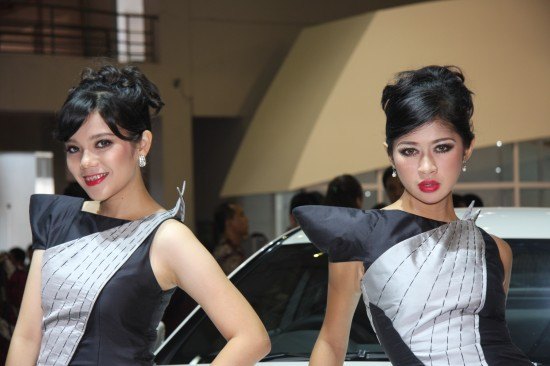





















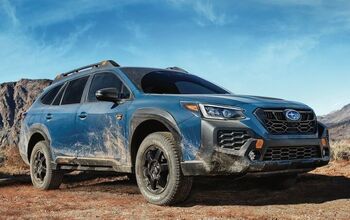
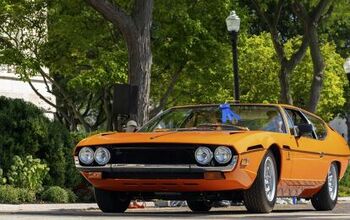

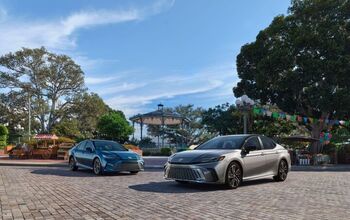
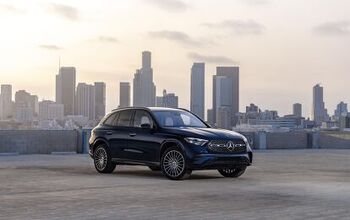
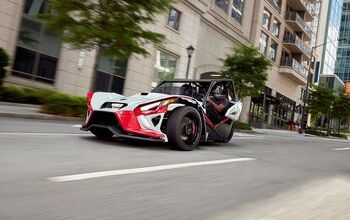
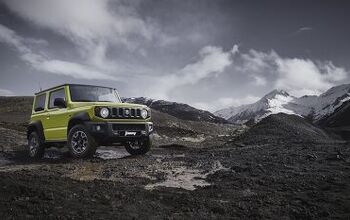
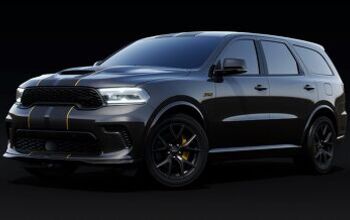
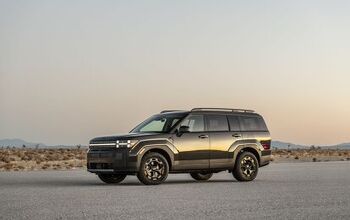

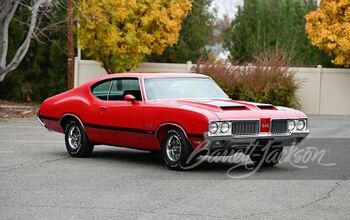
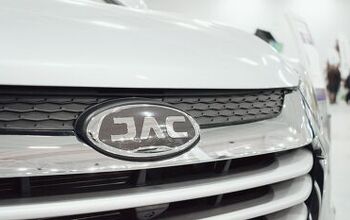
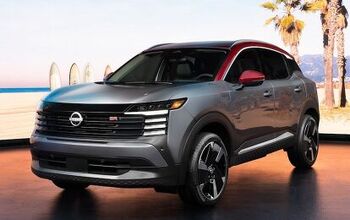

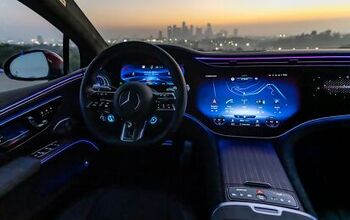
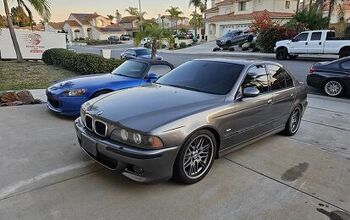

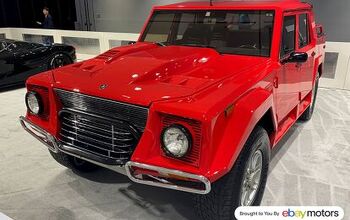
Comments
Join the conversation
the woman smiling on the left in the first picture, looks like she has braces or something on her teeth.?
What vehicle (white) is it behind the nice lady with pick & turquoise flora dress? It appears to be the same model as the brown car with raised hood that she is leaning on. Any idea?